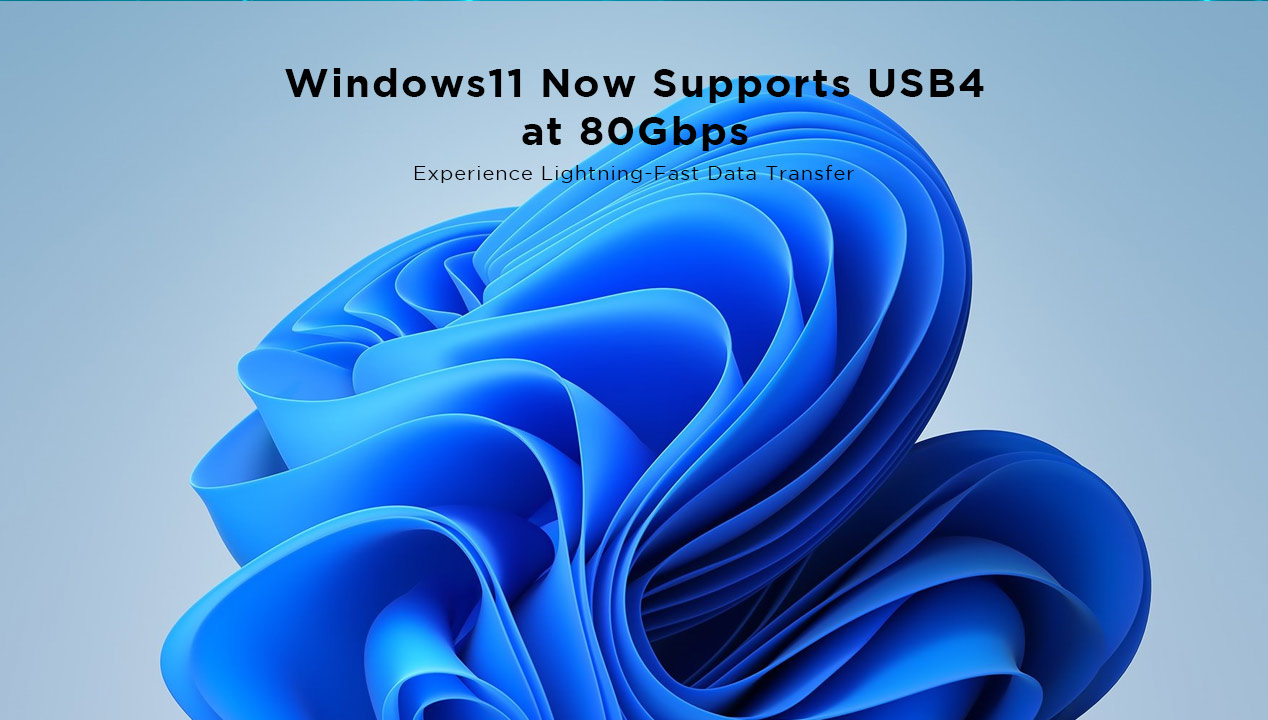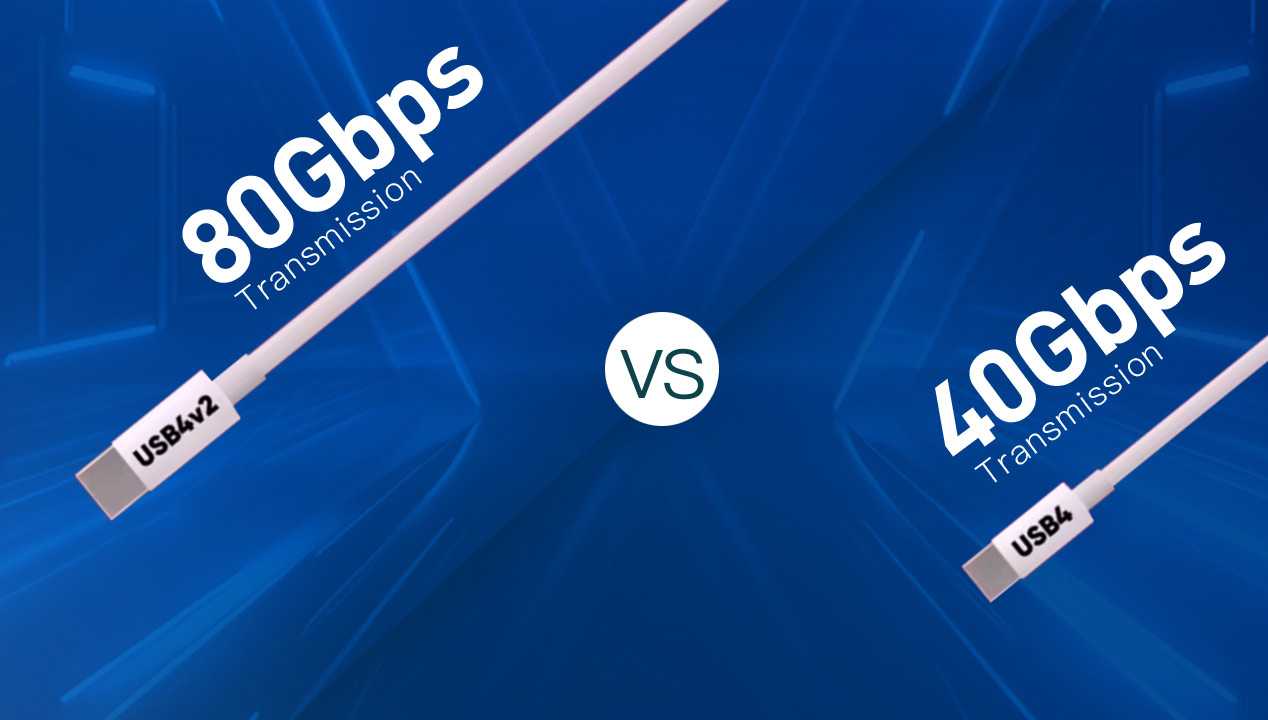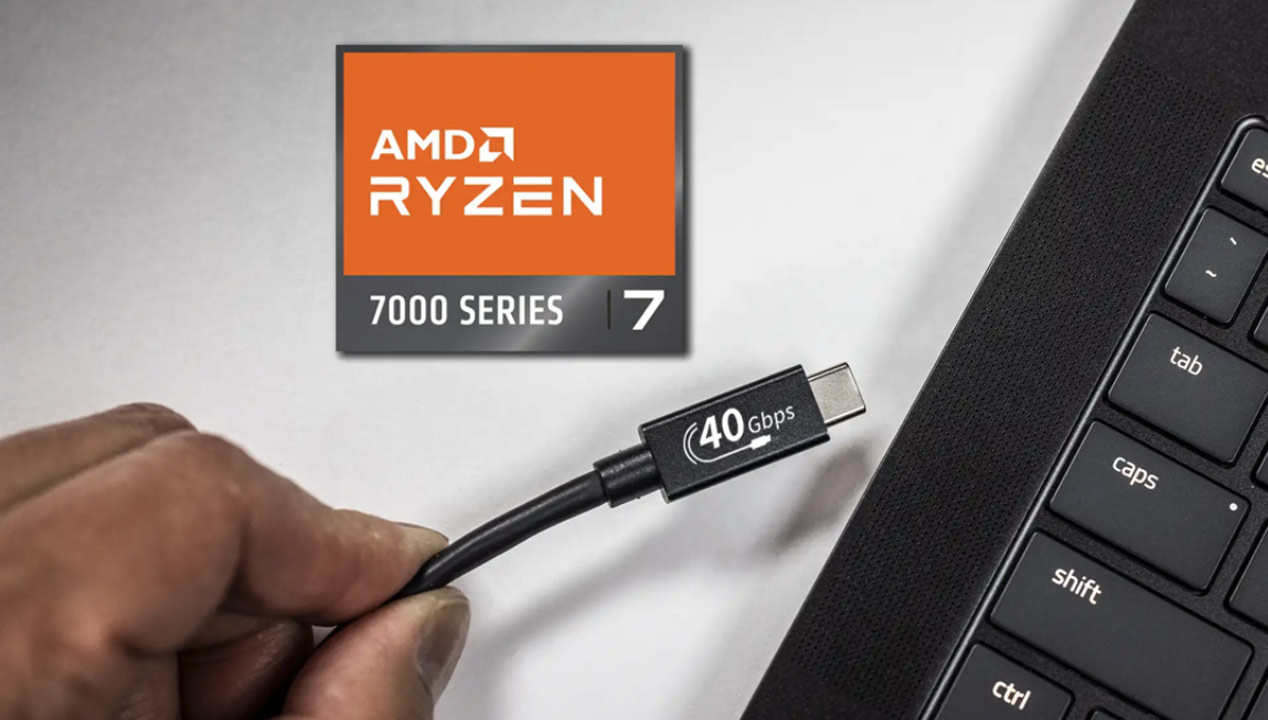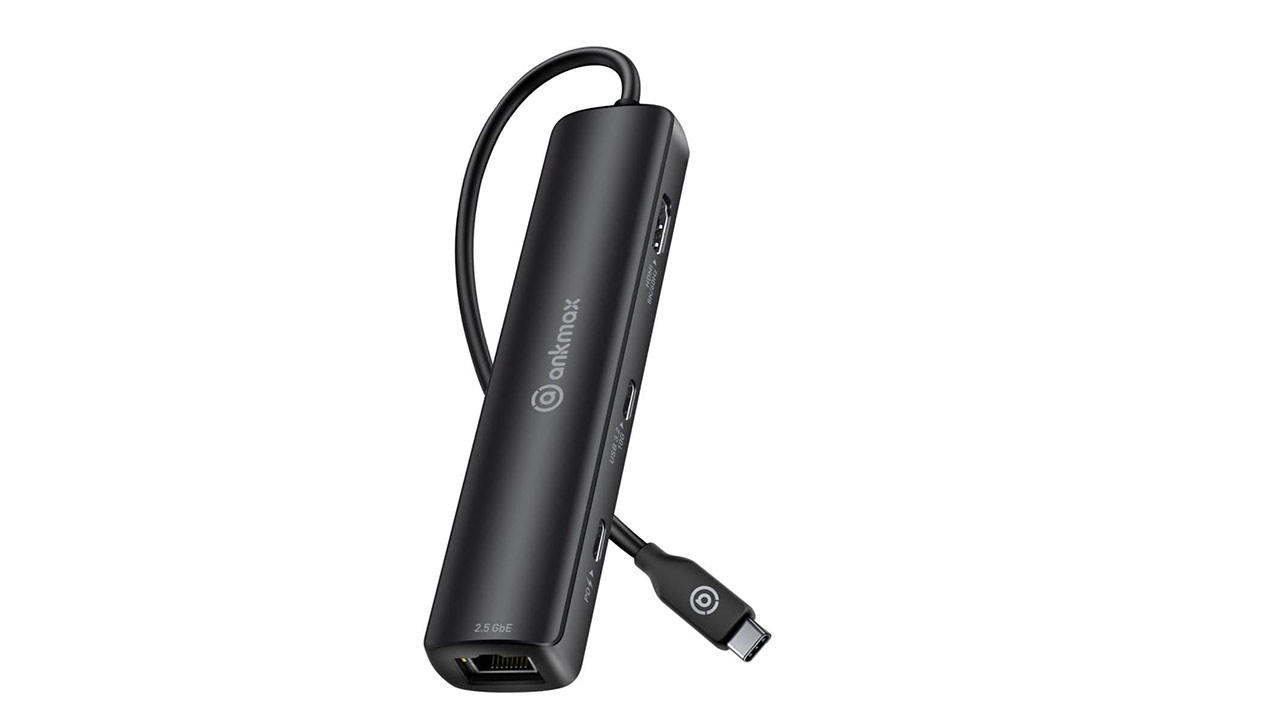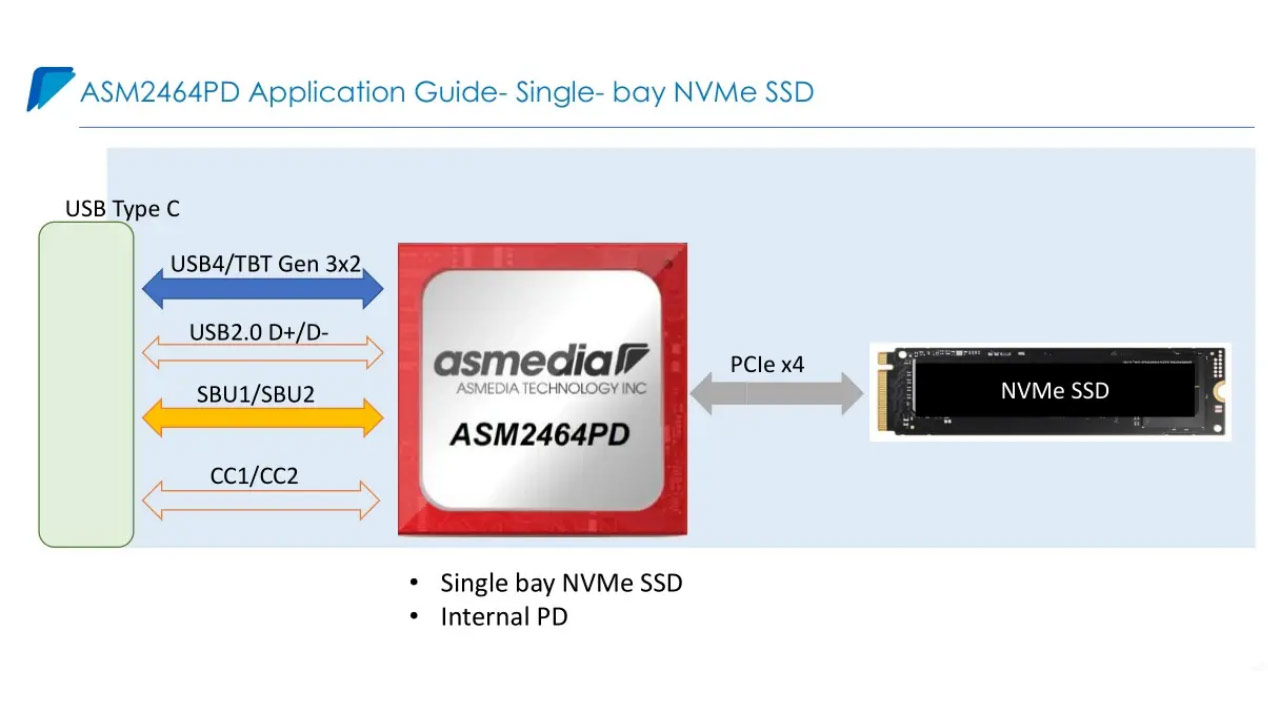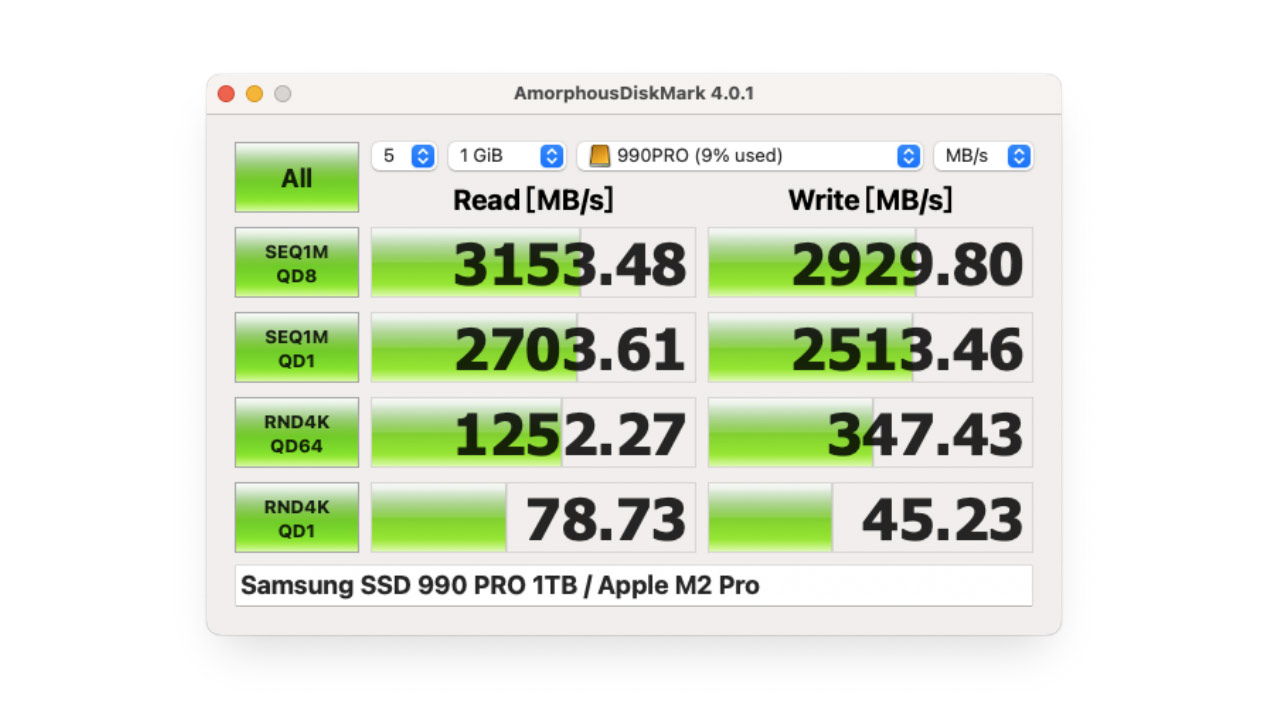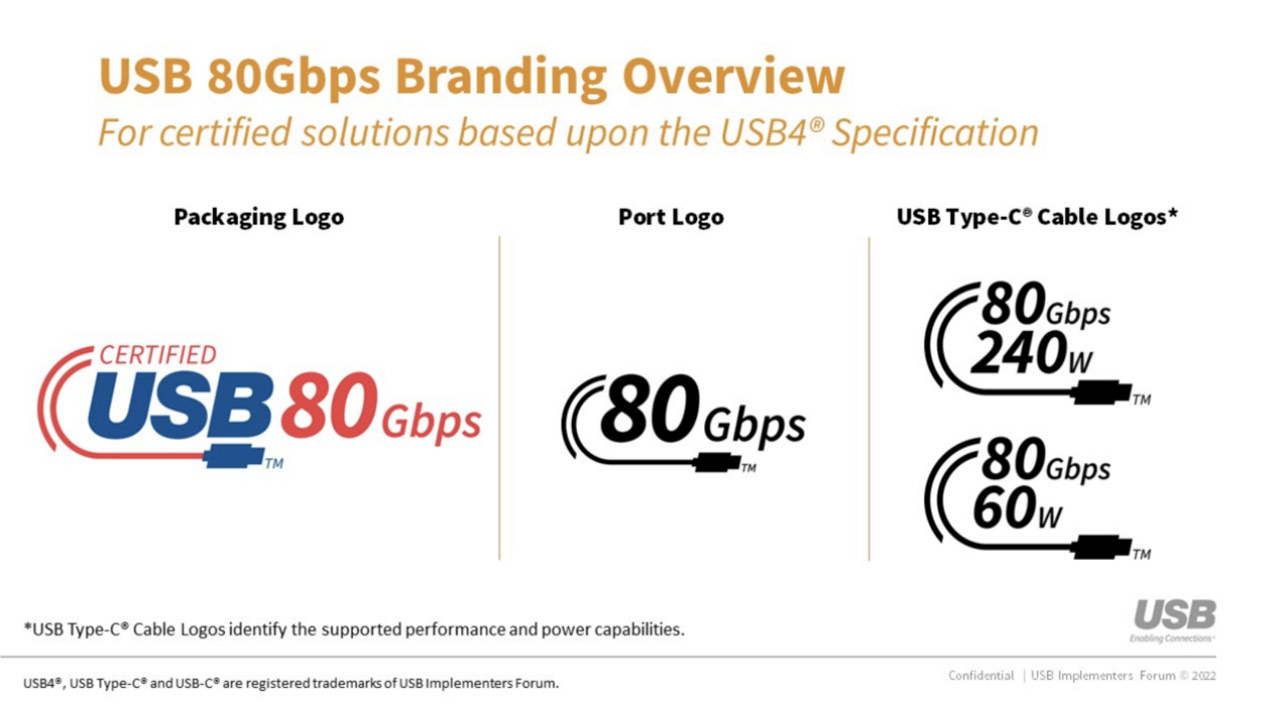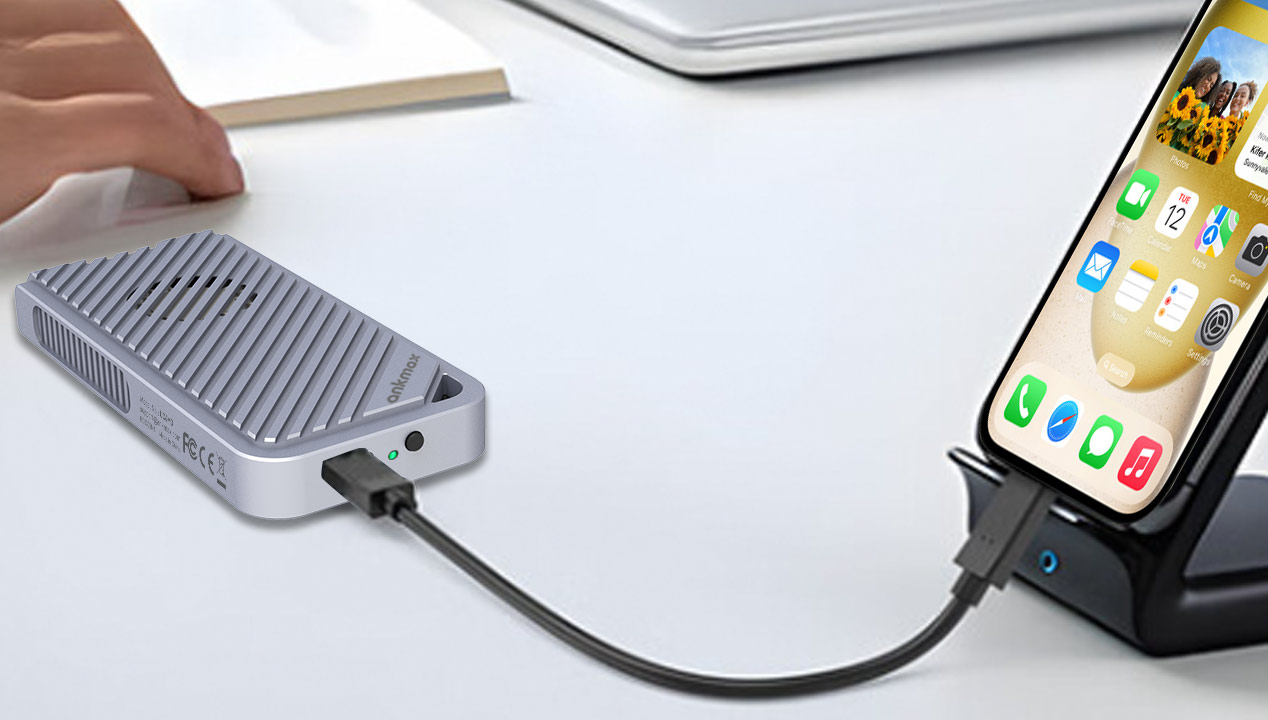The Era of High-Speed Transmission is Coming: Recommending New USB 4 Products
Recently, Microsoft quietly added support for 80Gbps USB4 connections, also known as USB4 2.0, in its latest Windows 11 update. This updated operating system version numbers 22621.3235 and 22631.3235, and many users have already gained relevant support through automatic updates.
The Windows 11 update indicates that devices capable of 80Gbps connections may become widespread this year. Under certain conditions, USB4 2.0 hardware can transmit data at speeds of up to 120Gbps in one direction and 40Gbps in both directions.
USB4 Science Section
In September 2019, USB4 was officially released with a maximum transmission rate of 40Gbps, the same as Thunderbolt 3. USB4 comes in two specifications: USB4 40 with a maximum bandwidth of 40Gbps and USB4 20 with a maximum bandwidth of 20Gbps. Consumers should be aware that USB4 40 is the full-speed interface.
In September 2022, the USB4 2.0 standard was exposed ahead of schedule, with a maximum speed increased to 80Gbps. It adopts a new data architecture, and the USB PD fast charging standard, USB Type-C interface, and cable standards will also be updated simultaneously.
It can be seen that the biggest change in the version update process is the improvement of data transmission rate, which has increased from the initial 1.5Mbps to the current 80Gbps exposed by USB4 2.0, an increase of tens of thousands of times. This change is mainly due to the upgrade of data transmission channels. Since the USB3 series of versions after 2013, the number of differential channels has increased to 4 pairs, and equipped with a better-performing USB-C port, which has qualitatively improved data transmission.
Currently, there are many products that apply high-speed data transmission functions to USB-C interfaces, mainly including some external storage devices (such as high-speed solid-state drives, high-speed transmission cables, and interfaces directly used for certain high-end laptops.
USB4 Terminal Equipment
The current types of USB4 terminal equipment are not too many, mainly concentrated on laptops, docking stations, hard drive enclosures, and data cables.
USB4 Laptop
With Intel's 11th generation CPUs opening up the Thunderbolt 4 protocol, more and more lightweight laptops have begun to use USB-C interfaces that support Thunderbolt 4; on the other hand, due to patent restrictions and other issues, the AMD camp has been unable to use higher specifications for a long time interface.
Until Intel opened the Thunderbolt 3 protocol to the USB-IF, the USB4 protocol with a maximum of 40Gbps began to emerge, and subsequent terminals and accessories related to the USB4 protocol began to emerge like mushrooms after rain. Starting from the AMD Ryzen 6000 series, official support for USB4 has also been added, with the same 40Gbps bandwidth as the Intel Thunderbolt interface, supporting high-definition video transmission specifications, and supporting the USB PD fast charging standard.
Currently, there are 17 laptops from mainstream brands on the market that adopt USB4 interfaces, including 6 from Apple, 3 from Lenovo, 2 from Acer, Mechanical Revolution, and ASUS, and 1 each from HP and Honor.
USB4 Docking Station
Most users of docking stations are users of laptops or lightweight laptops, and the emergence of docking stations has solved their interface anxiety. Nowadays, the function of docking stations is not limited to a single interface expansion function. Users generally pursue higher-specification video transmission and faster data transmission speeds.
With Intel freely opening the Thunderbolt 3 protocol to the USB Association, USB4 products with the same 40Gbps transmission specification as Thunderbolt 3 have emerged, which have significant advantages in terms of price and compatibility. Here are three USB4 docking stations currently on sale, some of which support the iPhone 15 series. These brands are Satechi USB4 Multiport Adapter and Ankmax P64HG2. Docking stations generally include USB-A, C, and HDMI interfaces, as well as 2.5GbE network interfaces.
USB4 Hard Drive Enclosure
After Intel freely opened the Thunderbolt 3 protocol to the USB Association, USB4 data cables, docking stations, hard drive enclosures, and other accessories with the same 40Gbps transmission specification as Thunderbolt 3 emerged, resulting in a higher overall cost-effectiveness.
With the popularization of 4K videos and the continuous increase in file size, users have increasing demand for the capacity of computers and mobile phones, and it is easy to have capacity anxiety problems. The combination of USB4 hard drive enclosures and m.2 solid-state drives has gradually become one of the most popular expansion methods for users. In addition to good portability, it also supports multi-device use and data transfer such as camera external recording, computer capacity expansion, and data storage, basically covering various daily usage scenarios.
Currently, there are 9 hard drive enclosures from mainstream brands on the market that adopt USB4 interfaces, including 3 from ORICO, 2 from Ankmax, 2 from UGREEN, and 1 each from Acasis, ULT-unite, and Yottamaster. The hard drive capacity is generally around 4T.
USB4 Data Cable
The data cable is an important carrier for data transmission. After the introduction of the USB4 standard, many manufacturers have overcome technical obstacles and developed USB4 data cables that have obtained USB-IF certification. Currently, there are various types of USB4 data cables that have obtained USB-IF certification, most of which are full-featured.
Currently, there are 11 data cables from mainstream brands on the market that adopt USB4 interfaces. The data cables include brands such as Anker, Apple, AENZR, Belkin, Biaze, Coaxial, Hagibis, Kaiboer, ORICO, UGREEN, ULT-unite, and Zikko. The supported charging power is in two ranges: 240W and 100W.
USB4 Main Control Chip
As the "brain" of USB4 terminal equipment, the importance of the main control chip is self-evident. Currently, according to the categories of USB4 terminal equipment, the main control chips have also differentiated into different types to adapt to terminal applications. The following is an introduction to the USB4 main control chip.
USB4 Hard Drive Enclosure Main Control Chip
USB4 is a new generation of technical specifications for the USB architecture, based on the Thunderbolt 3 protocol specification contributed by Intel, and is consistent with the Thunderbolt 4 specification. The USB4 architecture can dynamically share a high-speed link with multiple hardware endpoints to provide the fastest data transmission service.
A hard drive enclosure is a device that allows users to connect hard drives (such as SATA or NVMe) to the USB port of a computer. Hard drive enclosures that use the USB4 interface can provide higher data transmission speeds, up to 40Gbps, which enables users to access and transmit data stored on the hard drive more quickly. Currently, there are two solutions for mass-produced USB 4 hard drive enclosures on the market:
The first is to adopt the USB4 main control chip, which is the ASM2464PD from Asmedia.
ASM2464PD is a peripheral device controller that adopts USB4/Thunderbolt to PCIe/NVMe technology. It is used to connect and manage PCIe and NVMe storage devices to achieve high-speed data transmission. The USB4/Thunderbolt technology enables PCIe and USB protocols to be encapsulated into USB4/Thunderbolt transmission channels and tunneled through the USB4/Thunderbolt domain. ASM2464PD can be applied to various types of storage devices, such as portable SSDs, SSD enclosures, and any other PCIe-based storage products, which can be used to expand storage capacity through high-speed data transmission.
Unfortunately, the current heat generation of the ASM2464PD main control chip has not been well controlled, and the heat generation of the M.2 SSD itself is also very large. As a result, if the hard drive enclosure continues to adopt passive cooling, it will not be able to handle the heat generation well. During use, the temperature of the M.2 SSD may become too high, leading to frequency reduction or even a crash. It is necessary to add active cooling fans for heat dissipation, but it still does not guarantee long-term product temperature operation. Therefore, if a hard drive enclosure adopts the ASM2464PD main control chip, it may have a thick product volume, active cooling fans, and a metal shell, which may feel hot during use.
The second approach is to adopt the more costly Thunderbolt 3/4 + USB dual-controller solution. Currently, many USB4 hubs on the market still utilize this design, offering excellent stability and thermal control. Compared to USB4 hard drive enclosures using the ASM2464PD controller, these products exhibit the most stable performance on both Mac devices and Windows PCs. Because Thunderbolt 4 and USB4 are both built on the Thunderbolt 3 underlying protocol, they complement and are compatible with each other, meeting all USB4 specification requirements. As a result, devices supporting Thunderbolt 3/4 provide a superior experience, albeit at a higher product cost, leading to a higher sales price.
The following screenshot shows the speed test results from an Ankmax UC4M3 40Gbps M.2 hard drive enclosure, achieving read and write speeds of up to 3000MB/s, offering impressive performance, especially with excellent thermal control.
USB4 CPU Controller
The widespread adoption of USB4 hinges on leading international chip manufacturers like AMD, Intel, and Apple. Theoretically, any device that supports Thunderbolt 4 can also support USB4.
Both Thunderbolt 4 and USB4 are built on the Thunderbolt 3 underlying protocol, offering complementarity and compatibility. In simple terms, Thunderbolt 4 further enhances performance thresholds and expands functionality, meeting USB4 specification requirements, resulting in a better experience for devices supporting Thunderbolt 4. On the other hand, USB4 boasts stronger universality and lower requirements.
It's worth noting that while Thunderbolt 4 and USB4 both use the Type-C connector and offer a maximum speed of 40Gbps, they differ in certain aspects. For instance, Thunderbolt 4 ports are marked with a Thunderbolt symbol, whereas USB4 ports lack any such marking. Additionally, USB4 comes in two versions: USB4 20 and USB4 40, representing transmission speeds of 20Gbps and 40Gbps, respectively. On September 1, 2022, the USB-IF officially announced the new generation of the data interface specification, USB4 2.0 version, supporting up to 80Gbps data transmission rate.
Currently, devices equipped with Apple's M1 and M2 chips, AMD Ryzen 6000 series APUs, and Intel's 11th Gen Tiger Lake H processors support USB4.
The Unifying Trend of USB-C
USB-C has emerged as the most widely used physical interface for 3C digital devices. The EU's Common Charger certification has even introduced regulations mandating USB-C as the sole designated interface for 13 categories of devices. Apple's iPhone 15 series, released in September 2023, abandoned Lightning in favor of the USB-C interface, marking the first time iPhones and Android phones share a compatible connector. As an intelligent interface that combines fast data transfer and charging, the widespread adoption and unification of USB-C will undoubtedly drive the application of USB4.
Performance Enhancement to Meet Demand
As mentioned earlier in the history of USB protocols, the upcoming USB4 2.0 boasts a transmission rate of 80Gbps, significantly improving data transfer efficiency. This enhancement, especially in video data transmission, combined with high-definition display technology, will elevate the viewing experience to a new level. This is just one example of USB4's performance improvements, highlighting that technological advancements are always welcomed by the market.
The Trend of Standard Integration
Another crucial factor driving USB4's market growth is its continuous integration of new technical standards, making it increasingly versatile and powerful. This expansion effectively broadens USB4's application areas. Currently, USB4 not only offers backward compatibility with USB3.2, USB2.0, USB PD, and other protocols but also integrates Intel's Thunderbolt and DisplayPort technologies. Its "comprehensive performance" is impressive.
In summary, this article provides a glimpse into the overall ecosystem of USB4, which is still in its early stages of development. However, the subsequent market growth trends are expected to gradually improve and complete the USB4 ecosystem.


